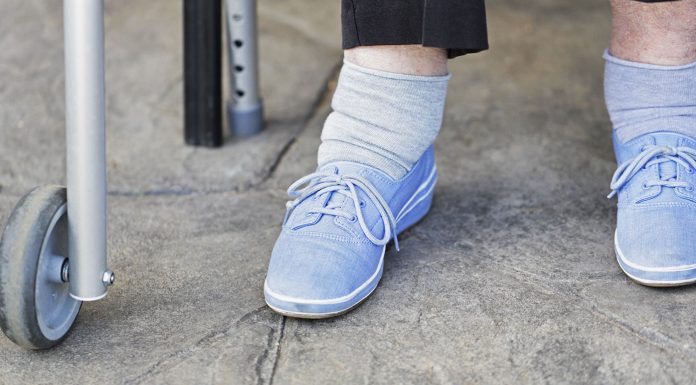By Shelley Jones
LEARNING OBJECTIVES
Reading and reflecting on this article will enable you to:
- Discuss elements in health decision-making.
- Discuss drivers for the emphasis on self-management in long-term conditions.
- Identify elements in the experience of long-term conditions which impact on a person’s ability to self-manage.
- Review how the professional contributions of clinical expertise and caring fit with self-management.
The emergence of self-management as health care policy
“Helping patients and families manage chronic conditions is an idea whose time has come 1.”
Self-management for people with long-term conditions is a policy endeavour that aims to support people to become more autonomous, independent and effective in managing their conditions, and to build upon the untapped resource of patients’ knowledge and experience2. If there’s an implication that they are dependent and ineffective without our help, the irony has not gone unnoticed. However, a study of motivation towards or away from self-management suggests that these aims do have resonance with those they are directed to3.
Self-management can be seen as part of a broader socio-political trend of promoting individual self-responsibility for health, prompted by demographic pressures (an ageing population), epidemiological trends (an increase in long-term conditions), and rising costs of healthcare. These three things put together threaten to overwhelm health services as we know them2, requiring new approaches in state-funded healthcare systems4. Two out of three adults (and one out of three children) in New Zealand have been diagnosed with at least one long-term condition – defined as any ongoing, long-term, or recurring condition that may have a significant impact on a person’s life5.
The idea of self-responsibility – being healthy as a duty – has emerged alongside the notion that citizens have rights to healthcare and rights as consumers of healthcare services (e.g. to make choices about their care and expect quality service)2,6. The notion of self-responsibility sidesteps what we do know about the complex correlations between social, cultural, and economic determinants of health7, by making the assumption that everyone is at risk of becoming ill6. From this faulty assumption follows another, that those who have poor health have made unwise or even culpable choices in light of known risk factors6,8.
“A society’s understanding of the determinants of health has an important influence on the strategies it uses to maintain and improve the health of its population9.”
What’s in a decision?
Using the term ‘evidence-informed decision-making’ overcomes mistaken ideas that evidence alone should determine a clinical course of action, or that evidence-based practice will lead to unthinking application of guidelines and ‘cookbook’ nursing10. It reminds us that evidence is just one element of decision-making, and one that is particularly useful in understanding the options in managing two other elements: a patient’s clinical state and circumstances and the resources available10,11. A fourth element, and the one which has primacy, is ‘the person before you’12. Because the decision is about them, the way they define themselves, their situation, experiences, and hopes must be ‘in the decision’ as the final and determining element11.
But are we talking about a person or a patient/client/consumer/service-user? This question prompts us to think about two things, role-taking and individualism.
People with long-term conditions are in the patient or client role only for the brief period of time that they are interacting with health professionals and services. This article uses the term ‘patient’ to denote that moment, without loading an association of passivity, nor suggesting that being a consumer of health services makes one less than a person. Rather, it is to value the perspective that looks beyond the ‘patient’ to the larger context of the person’s life, and also acknowledges potentially disempowering aspects of taken-for-granted ‘ways patients are treated’ in health systems.
Thinking about a person as an ‘individual’ is helpful in terms of acknowledging their uniqueness. What is also particular to a person are the ties of mutual connection and commitment with their significant others and family/whānau – those they count as close and necessarily needing to be involved in decisions. These others may provide care and support or take significant oversight of the person’s daily health practices and facilitate their interaction with health services.
Equally, it is not always a single individual on the service provider/health professional/clinician side of the equation. Although many disciplinary perspectives may need to be woven together and a number of services integrated, the doing of this should not deny the person to make choices between available options or to set the overall direction of a plan of care.
An idea central to shared decision-making is that it is an opportunity to inform and educate the patient (whilst learning about their preferences), so that they will be more engaged (i.e. be interested, involved, and participate actively in maintaining or restoring their health13. In other words, it is thought that if people are in possession of appropriate information about their health risks, they will make the right decisions and undertake the ‘correct’ self-management actions2.
This convenient formula is likely to be found wanting. It assumes that people can calculate their health risks, make rational choices on the basis of their calculations, and are free to give management of health risk complete primacy in their lives2,16.
For people living with chronic illnesses (that particular term being used here deliberately to highlight the idea that people with long-term conditions may, at times, feel far from well), what counts as risk may be a very different thing. Their ‘risk agenda’ is about living with and managing uncertainty related to keeping up their social roles and obligations, their unreliable body and changed sense of self, and the negative emotions engendered by these things2.
Lived experience: insider information
Nurses have shown a commendable interest in qualitative research into the experience of people affected by chronic illness, and Thorne suggests this body of evidence could inform – and transform our practice.
Key areas of knowledge derived from what she calls ‘insider research’ include:
- difficult double binds that arise from trying to live as normal a life as possible while coping with the need for support to do so
- the disabling impacts (socially and emotionally) of things commonly experienced in chronic illnesses, such as pain, fatigue, and impaired mobility
- the choices and decisions people with long-term conditions (whether evident or not evident to others) face to manage or avoid being stigmatised
- what can be learned from patients’ skilful self-management and the futility of expecting adherence to treatment and care plans not tailored to the individual14.
However, the complex and enduring dynamics of institutionalised attitudes, procedures, and power differentials – difficult to mitigate even by those healthcare workers aware of them – and the privileging of scientific clinical knowledge, for Thorne, creates ‘…natural tensions between how we healthcare professionals tend to do business and what chronically ill people experience’. This makes direct communication between people with long-term conditions and their healthcare providers a ‘pivotal moment’ holding the potential to facilitate self-management, coping, and an optimal quality of life, or to undermine and damage those ideals14.
The question here is: how does communication between health professionals and patients in these relatively brief encounters impact on how the real care happens – by people managing their condition amidst all the priorities, commitments, and meanings of their lives? This question is closely related to the intent of cultural safety, which addresses ‘the power of the health professional to influence care positively or negatively’15.
That influence plays out through our conscious and unconscious actions and decisions: positively, when people feel our respect, recognition, and protection of their rights, and negatively if they feel diminished, demeaned, or disempowered in the encounter16.
Taking a deliberate stance of self-awareness (what is my perspective?) and sensitivity to a person’s response (what is their perspective?) allows the possibility of learning about what we perhaps do unconsciously that is helpful or unhelpful15.
Clinical expertise and caring
The moment when a choice is to be made, options explored, problems solved, is when self-management meets clinical expertise. Clinical expertise helps the professional assess and recognise the clinical state and situation of ‘the patient before you’. Caring means committing to assisting with what is needed by ‘the person before you’. The process of together working through what is involved in deciding on a course of action doesn’t take away from the decision ultimately being the person’s because the decision is about them.
Knowledge of the disease processes in long-term conditions means that we can teach and coach patients in recognising, avoiding, or managing typical problems, matching our support to their readiness and resourcefulness. Clinical experience means that we can recognise when a person’s capacity for self-care has not yet been activated or is compromised or exceeded. It also means knowing when the demands of a long-term condition are more than what can be realistically asked of self-management. Compassionately meeting a person’s needs for care at such times can be an affirmation that living with a long-term condition is not an easy task17,18.
In addition to clinical knowledge relevant to the area of practice, part of what we claim as nursing expertise is a sensitive and skilful reading of people19. This involves making no assumptions about ‘the person before us’, while simultaneously referencing what caring for people in similar situations has taught us. We can augment that background of personal knowledge by tapping into insider experience (in studies such as those of coping, transformation, and receiving care3,20,21,22 or reviewing theoretical frameworks23.
From the perspective of the person living with a long-term condition, relationships with health care providers evolve over time through three predictable stages: from an initial naïve trust at diagnosis, through disenchantment (resulting from negative experiences which break that trust), to an eventual resolution in a guarded alliance. These alliances vary according to trust: both the person’s trust in their own competence and their trust in the provider’s competence and commitment to them. This stage is one where the person with a long-term condition has resolved their ongoing dependence on providers by developing new kinds of relationships with them14. The opportunity for professionals is to bring clinical expertise to these negotiated partnerships in new ways:
“Where healthcare professionals recognise the limits of what they have to offer, and recognise the patient’s primary authority in matters pertaining to actually living with a chronic disease, they paradoxically become much more useful to their patients as consultants and resource brokers within a context of shared care.14”
Download the learning activity here>>
QUESTIONS THIS ARTICLE MIGHT PROMPT YOU TO ASK YOURSELF
When I’m seeking professional advice (e.g. legal) or some skilled service (e.g. hairdressing, tree pruning) what do I expect to happen around decision-making?
- What is it about the practitioner that causes me to have confidence in them?
- What kinds of things can make me feel uncertain about what we are going to do or decide together?
- What could I apply in my practice from what I look for in decision-making processes as a consumer?
What is the ‘informal talk’ that goes on in my workplace about the respective importance of genetic disposition, socio-economic and environmental factors, individual/family circumstances, and self-responsibility to how healthy people are?
How do those attitudes and beliefs inform service delivery and our interactions with patients?
DEFINING DECISION RESPONSIBILITY
Paternalism
When the health professional holds all the relevant information and assumes responsibility for making decisions ‘in the best interests of the patient’ and according to her/his own clinical preferences13. Patients who modify a prescribed plan are seen to be ‘non-compliant’, rather than being involved in learning self-care14. Closely related to the idea of ‘clinical freedom’, paternalism has been challenged by evidence-based medicine, cost containment, and consumerism24.
Shared decision-making
Active participation or collaborative engagement in decision-making is both necessary and possible for people with long-term conditions. The enduring nature of the problem activates a self-management response, and decisions rarely need to be made finally or in great haste13,17,25. Although a small proportion wish to delegate decisions, a systematic review of patient preferences for shared decision-making found that the majority wish to participate in decisions26.
Some important points:
Recommended models for shared decision-making have several elements, which taken together, build a partnership: ensuring a shared understanding of the person’s experience and expectations, presenting information and treatment options, discussing the patient’s values and lifestyle, outlining which options are recommended given the patient’s preferences, asking the patient for their choice, and checking for shared understanding and agreement on a course of action13,26. This process requires sufficient time, but as importantly, the full commitment and engagement of the professional.
It is possible that the process of involvement is more important than who actually decides25.
Trust and confidence within the patient-provider relationship is critical because decisions involve risk and uncertainty2,13.
Flexibility and an open mind is needed to respond to a person’s changing preference for decision responsibility, perhaps within the course of a discussion or as their condition exacerbates or improves25,26.
Even when striving for a climate of equality and partnership, health professionals acknowledge and address an imbalance in clinical knowledge and power when they take responsibility for creating a supported and safe place for patient participation and choices about decision-making which allows the possibility of both resourcefulness and vulnerability on the patient’s part14,25. Equally, health professionals are responsible for presenting information and options based on the best available evidence, tailored for the person in ways that are relevant, meaningful and understandable13.
Independent choice
At the opposite end to paternalism on a decision-making spectrum is an equally radical position: avoidance of clinical opinion and advice, in which health professionals simply present the facts and place decision-making responsibility with the patient. This position can be understood as a positive response to consumerism, where a health professional genuinely wishes not to influence a patient’s decision (however, at the same time, professionals may not be completely comfortable about withholding their perspective). In jurisdictions where patients have the right to bring a lawsuit, health professionals may seek to protect themselves by requiring the patient to make an independent choice13.
Recommended reading and resources
Article
THORNE Sally (2005) Patient-provider communication in chronic illness. Family and Community Health 29(1):4S-11S
Web resources
Health Expectations has a critical perspective and research emphasis on public participation in policy and patient participation in care. See the open access virtual issue, ‘Achieving Patient-Centred Healthcare’ at http://onlinelibrary.wiley.com/journal/10.1111/(ISSN)1369-7625/homepage/virtual_issues.htm
Patient Education and Counseling is an interdisciplinary journal exploring patient education, counselling, and health promotion services. http://www.pec-journal.com/issues?issue_key=S0738-3991(11)X0012-5
Professionals and patients contribute at the online Journal of Participatory Medicine. Kathy Kaster’s eight point philosophy is a personal manifesto on self-management and shared decision-making at http://www.jopm.org/opinion/commentary/2011/09/06/my-8-point-participatory-philosophy-what-makes-me-a-participatory-patient/
A set of stories about great care in New Zealand health services show how personal consideration and obvious clinical skill made patients feel safe and better able to look after themselves – find them at the Health and Disability Commissioner’s website: http://www.hdc.org.nz/publications/other-publications-from-hdc/stories-about-great-care
The US-based Institute of Healthcare Improvement has developed a resource particularly useful for the primary health setting, Partnering in self-management support: A toolkit for clinicians, available at http://www.improvingchroniccare.org/index.php?p=Self-Management_Support&s=39
The Health Foundation (UK National Health Service) booklet, Evidence: Helping people help themselves. A review of the evidence considering whether it is worthwhile to support self-management, offers a comprehensive, highly readable review of evidence and practical approaches. Available at http://www.health.org.uk/publications/evidence-helping-people-help-themselves/
Here in Aotearoa, resources developed by the Best Practice Advocacy Centre (BPAC), are directed to primary care but useful to all settings. The first article in an annual series on Maori health is recommended for simple and powerful points to make health services responsive for everyone – Practical solutions for improving Māori health – at http://www.bpac.org.nz/magazine/2008/may/docs/bpj13_solutions_pages_10-14.pdf Another resource is ‘Healthy lifestyles mean different things for different people’ from the issue Promoting healthy lifestyles for Pacific peoples (Best Practice 32, November 2010) is at http://www.bpac.org.nz/magazine/2010/november/promoting.asp#lifestyles
About the author:
Shelley Jones RN BA MPhil has been working in nursing professional development for 30 years.
Acknowledgements:
Thank you to peer reviewers Dr Catherine Cook,
Dr Fran Richardson, and Faith Roberts for their helpful critique.
References
1 SCHAEFER J, MILLER D, GOLDSTEIN M, SIMMONS L (2009) Partnering in Self-Management Support: A Toolkit for Clinicians. Cambridge, MA: Institute for Healthcare Improvement
2 MORDEN A, JINKS C & ONG B N (2012) Rethinking ‘risk’ and self-management for chronic illness. Social Theory and Health 10:78–99.
3 JOWSEY T, PEARCE-BROWN C, DOUGLAS K A, YEN L (2011) What motivates Australian health service users with chronic illness to engage in self-management behaviour? Health Expectations (abstract).
4 JOYCE P (2001) Governmentality and risk: setting priorities in the new NHS. Sociology of Health and Illness 23:594–614.
5 MINISTRY OF HEALTH (2009) Report on New Zealand Cost-of-Illness Studies on Long-Term Conditions. Ministry of Health: Wellington.
6 GALVIN R (2002) Disturbing notions of chronic illness and individual responsibility: Towards a genealogy of morals. Health 6(2):107–137.
7 NATIONAL HEALTH COMMITTEE (1998) The Social, Cultural and Economic Determinants of Health in New Zealand: Action to Improve Health. National Advisory Committee on Health and Disability: Wellington.
8 NUTBEAM D (2000) Health literacy as a public health goal: A challenge for contemporary health education and communication strategies into the 21st century. Health Promotion International15(3):259-267.
9 MUSTARD J F (1996) as cited in National Health Committee (1998) p21.
10 DICENSO A, CULLUM N, CILISKA D (1998) Implementing evidence-based nursing: some misconceptions. Evidence-Based Nursing 1(2):38-40.
11 HAYNES R B, DEVEREAUX P J & GUYATT G H (2002) Clinical expertise in the era of evidence-based medicine and patient choice. Evidence Based Medicine 7:36-38.
12 I would like to acknowledge Dr Fran Richardson’s use of this phrase in her feedback on a draft of this article. Note that ‘the person before you’ can also be read as a challenge to the clinician’s preferences.
13 EPSTEIN R M, ALPER B S, QUILL T E (2004)Communicating evidence for participatory decision making. Journal of the American Medical Association 291(19):2359-2366.
14 THORNE S (2005) Patient-provider communication in chronic illness a health promotion window of opportunity. Family and Community Health 29(1S): 4S–11S.
15 RICHARDSON F I (2012) Cultural Safety in Nursing Education and Practice in Aotearoa New Zealand (Doctoral thesis). Massey University : Palmerston North.
16 WOOD PJ & SCHWASS M (1993) Cultural safety: a framework for changing attitudes. Nursing Praxis New Zealand 8(1):4-15.
17 MARTIN N J (1999) Review: research on chronic illness has shifted towards viewing the individual as empowered and a partner in the health management process. Evidence-Based Nursing 2(1):32
18 KEIGHLEY T (2006) From sickness to health. In NELSON S & GORDON S (Eds) The Complexities of Care: Nursing Reconsidered (pp 88-103). ILR Press : Ithaca NY
19 TANNER C A, BENNER P, CHESLA C & GORDON D R (1993) The phenomenology of knowing the patient. Journal of Nursing Scholarship 25: 273–280.
20 DUBOULOZ C-J, KING J, PATERSON B, ASHE B, CHEVRIER J, MOLDOVEANU M (2010). A model of the process of transformation in primary care for people living with chronic illnesses. Chronic Illness 6: 282–293.
21 CHRISTENSEN J (1990) Nursing Partnership: A Model for Nursing Practice. Daphne Brasell,: Wellington.
22 BENNER P & WRUBEL J (1989) The Primacy of Caring: Stress and Coping in Health and Illness. Addison-Wesley : Menlo Park CA.
23 WELLARD S (1998) Constructions of chronic illness. International Journal of Nursing Studies 35:49-55.
24 HAMPTON J R (1983) The end of clinical freedom. British Medical Journal 287(6401):1237-8.
25 EDWARDS A & ELWYN G (2006) Inside the black box of shared decision making: distinguishing between the process of involvement and who makes the decision. Health Expectations 9:307–320.
26 CHEWNING B, BYLUND C L, SHAH B, ARORA N K, GUEGUEN J A, MAKOUL G (2012) Patient preferences for shared decisions: A systematic review. Patient Education and Counseling 86:9–18.






















